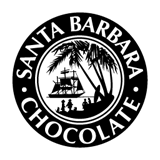Spain and The World of Chocolate Travels
Spain is a great country to visit and if you're properly prepared it is a relatively easy place to get around on your own and explore.
I would recommend a Tom Tom GPS if you plan to rent a car and drive. The AAA maps of Europe available in the USA are not accurate. If you use these maps as a guide, you'll often find yourself driving in the wrong direction to the wrong location. The European Tom Tom GPS is very helpful and is well worth the small purchase price when considering the frustration saving.
Also consider making your European vacation a minimum of 15 days. It really takes a week to get into the swing of a new culture and environment. Then you have a week to fully explore and appreciate your surroundings. The last day is thrown in as a buffer to help with jet lag and getting accustom to the time differences.
